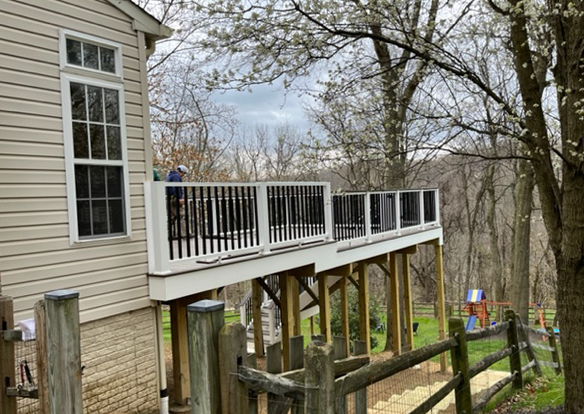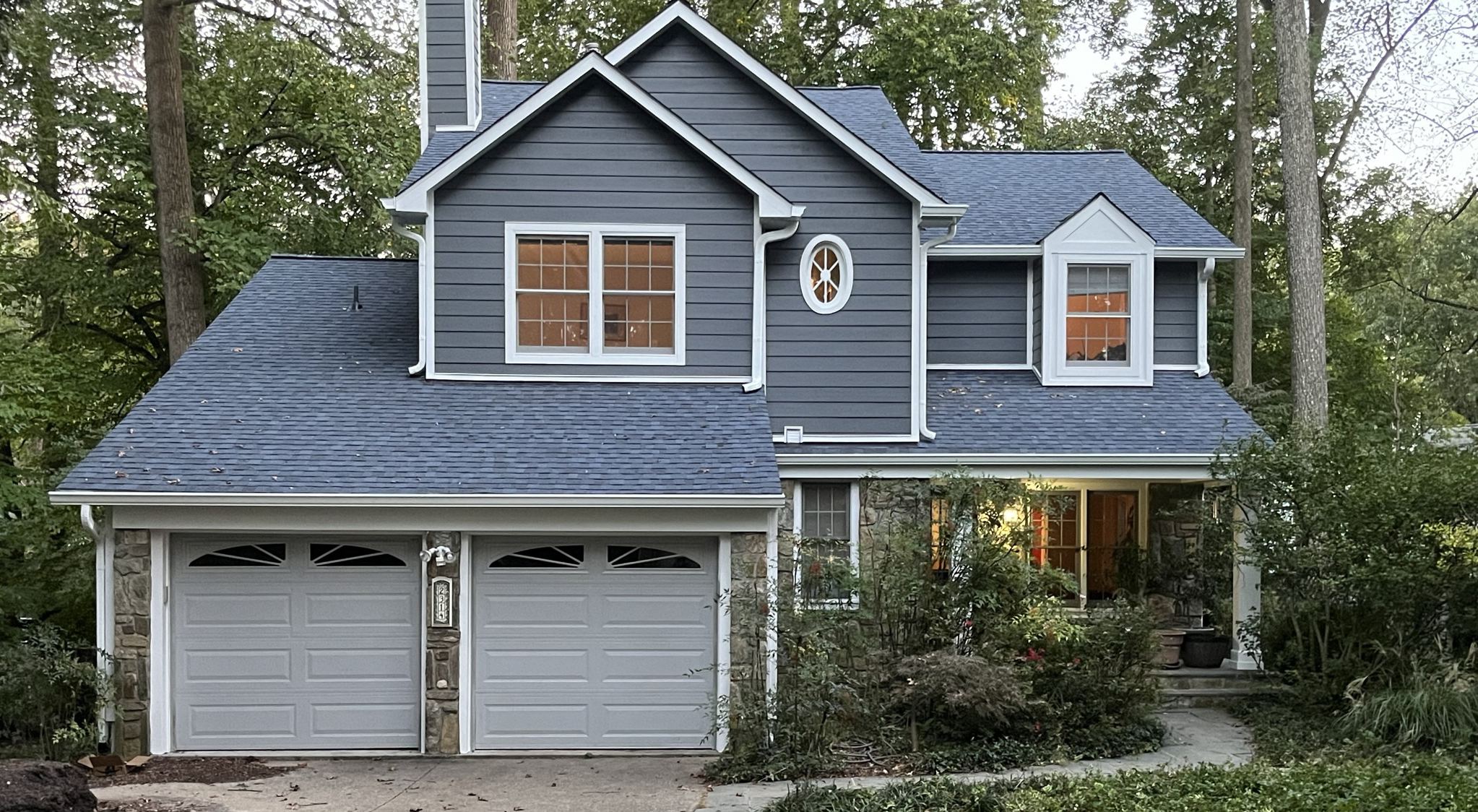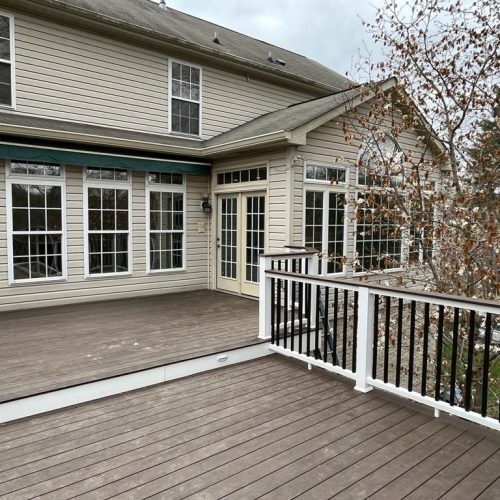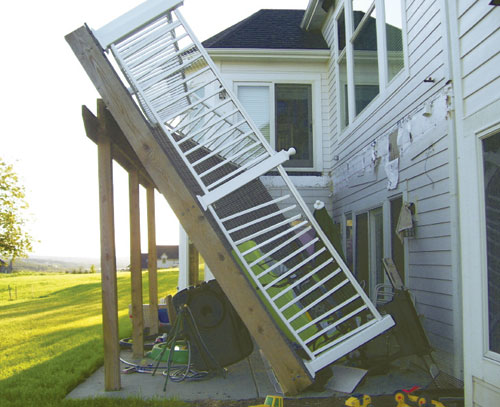Image and Text extract From Moisture Shield blog- Our Top recommended Product
As you plan your dream deck, one of the key choices you face is what type of decking to use. Two of the most common options are wood and wood-plastic composites. This article discusses factors to consider when comparing wood vs. composite decking.
“The majority of decks are built of pressure treated lumber (Non visible) unless you walk underneath, the remaining question is Wood or Other material? for the decking and railing”
Many different wood species are available for use as decking and railing. Common options at U.S. lumberyards include cedar, redwood, and pressure treated lumber. For homeowners interested in exotic wood species, tropical hardwood decking options include tiger wood, ipe and mahogany.
Wood decking pros and cons are discussed later in this article.
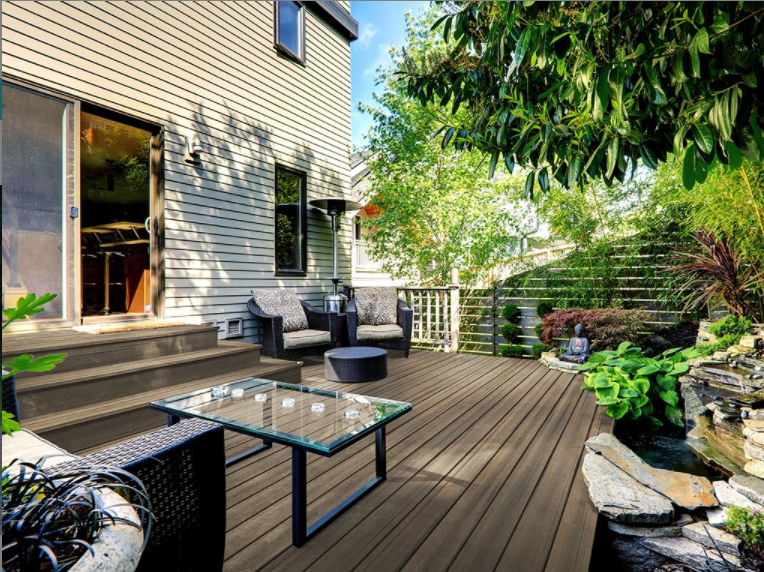
Composite Wood Decking
Invented in the late 1980s, wood-plastic composite decking (also called “composite wood decking”) is made of wood fibers encased in plastic. Composite decking is readily available at big box home improvement stores like The Home Depot and Lowe’s, as well as local lumberyards throughout the U.S.
As more builders and homeowners learn of wood decking problems, many are turning to high-performance composite decking.
Wood Vs. Composite Decking – The Pros & Cons
Many homeowners choose wood decking because it is familiar, readily available and affordable. At the same time, wood decking problems like splinters, rot and high maintenance cause many headaches. Although composite wood decking is easier to maintain, some homeowners worry that composites won’t look as nice as wood. However, manufacturing advances have led to composites that emulate the rich natural look of wood without the hassles of maintaining a wood deck.

When evaluating wood vs. composite decking, here are key issues to consider:
Looks
While early-generation composite decking tended to look artificial and plastic-y, some modern composites are available with a variegated appearance, and randomized embossed grain pattern so no two boards are alike. The result is composites that more closely resemble wood deck boards, like Moisture Shield’s Vision decking line.
Moisture
A key wood decking problem is that boards readily absorb water. Without the regular application of stains, sealers or paint, wood decking is susceptible to warping, splintering, cracking and rotting. In contrast, composite decking brands like MoistureShield and ChoiceDek are fully moisture-resistant to the core, which allows them to be installed in high moisture conditions without decaying.
Maintenance
To extend the life of a wood deck, homeowners must regularly paint, stain or seal the decking to defend against moisture. Composites, on the other hand, only require sweeping or washing to keep the boards looking good.
Insect Damage
Unlike most wood decking, composite decking is not prone to damage from termites and other wood-destroying insects.
Splinters
While all-wood decking will eventually splinter, composite decking is made with small wood fibers encased in plastic, so it won’t splinter. This is especially important for walking on the deck barefoot, and for children and pets, whose feet are sensitive.
Price
Among wood decking’s pros and cons, affordability is a decided benefit. Typically, wood decking is lower cost to purchase than composites, especially in the initial purchase. However, although the initial cost of wood is less, composite usually ends up paying for itself within 2-3 years when including the cost of annual maintenance. The price differential also depends on the wood species chosen versus the brand of composite decking, and local market conditions.
Workability
Both wood and composites are easy to cut and fasten using common tools most homeowners have. One area where composites come out ahead is they can more easily be bent (by heating them) to form curved deck sections.
Surface Temperature
Wood decking has historically had an advantage over composites when it comes to summer weather, as composites can become uncomfortably hot in direct sun, give their density. However, new manufacturing capabilities, like CoolDeck® technology from MoistureShield, reduce heat absorption up to 35% compared to conventional capped composites in similar colors, so your deck stays more comfortable on hot days. Did you know feet can begin to blister at temperatures as low as 109 degrees Fahrenheit? Showing that 35% difference can be crucial, especially in the peak of summer heat.
Making Your Selection
To cut through the numerous choices, it is helpful to figure out which wood decking you like best then compare that to your favorite composite. Thus, instead of having to put dozens of options head-to-head, your choice becomes simpler, whether it is cedar vs. composite, redwood vs. composite or treated lumber vs. composite.
For additional insights on wood vs. composite decking, and to see how MoistureShield stacks up against other types of decking materials>
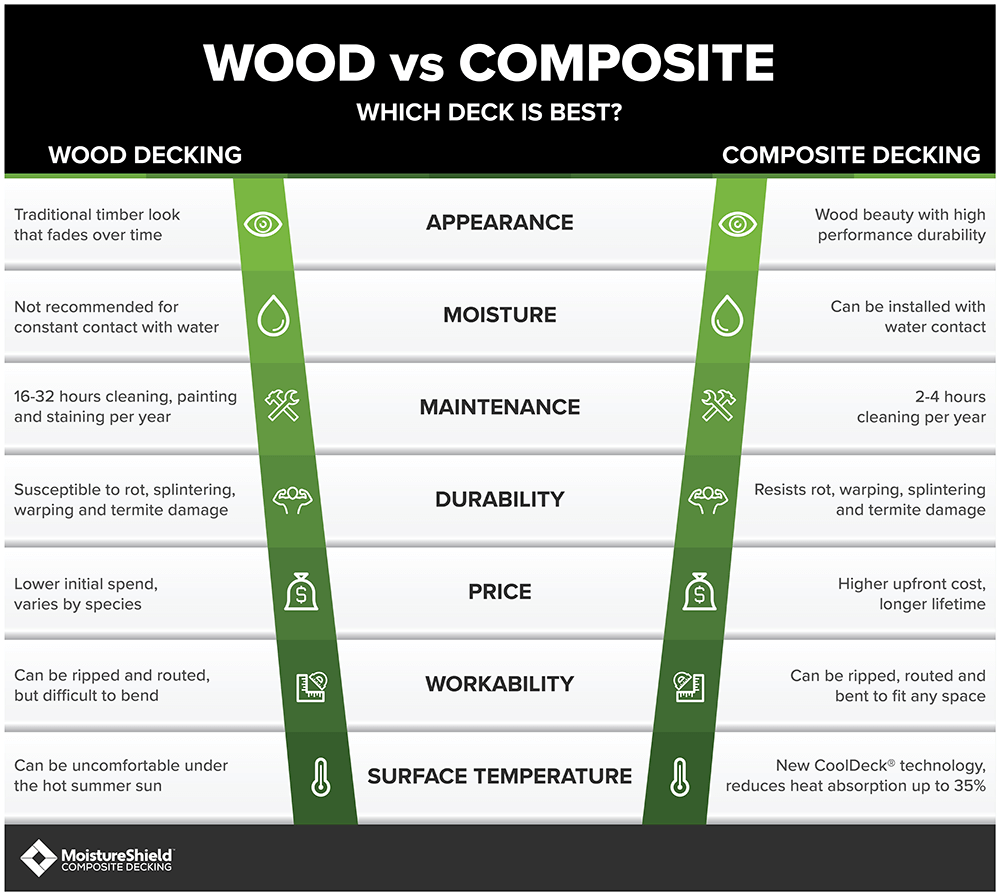
Are you ready for our Complementary in-home Consultation?
Please fill out the form by clicking on
https://e81studio.com/contact
Rafael Antonio Huguet Lotterer, Owner of E81 Studio
Call Us: (240) 205-3758
E-mail us: info@e81studio.com



